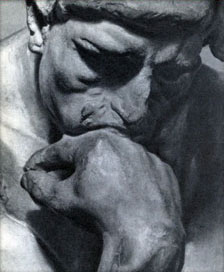Literal meaning See MEANING. literary theory, a reasoned account of the nature of the literary artifact, its causes, effects, and distinguishing features. So understood, literary theory is part of the systematic study of literature covered by the term ‘criticism’, which also includes interpretation of literary works, philology, literary history, and the evaluation of particular works or bodies of work. Because it attempts to provide the conceptual foundations for practical criticism, literary theory has also been called ‘critical theory.’ However, since the latter term has been appropriated by neo-Marxists affiliated with the Frankfurt School to designate their own kind of social critique, ‘literary theory’ is less open to misunderstanding. Because of its concern with the ways in which literary productions differ from other verbal artifacts and from other works of art, literary theory overlaps extensively with philosophy, psychology, linguistics, and the other human sciences. The first ex professo theory of literature in the West, for centuries taken as normative, was Aristotle’s Poetics. On Aristotle’s view, poetry is a verbal imitation of the forms of human life and action in language made vivid by metaphor. It stimulates its audience to reflect on the human condition, enriches their understanding, and thereby occasions the pleasure that comes from the exercise of the cognitive faculty. The first real paradigm shift in literary theory was introduced by the Romantics of the nineteenth century. The Biographia Literaria (1817) of Samuel Taylor Coleridge, recounting the author’s conversion from Humean empiricism to a form of German idealism, defines poetry not as a representation of objective structures, but as the imaginative self-expression of the creative subject. Its emphasis is not on the poem as a source of pleasure but on poetry as a heightened form of spiritual activity. The standard work on the transition from classical (imitation) theory to Romantic (expression) theory is M. H. Abrams’s The Mirror and the Lamp (1953). In the present century theory has assumed a place of prominence in literary studies. In the first half of the century the works of I. A. Richards – from his early positivist account of poetry in books like Science and Poetry (1926) to his later idealist views in books like The Philosophy of Rhetoric (1936) – sponsored the practice of the American New Critics. The most influential theorist of the period is Northrop Frye, whose formalist manifesto, Anatomy of Criticism (1957), proposed to make criticism the ‘science of literature.’ The introduction of Continental thought to the English-speaking critical establishment in the 1960s and after spawned a bewildering variety of competing theories of literature: e.g., Russian formalism, structuralism, deconstruction, new historicism, Marxism, Freudianism, feminism, and even the anti-theoretical movement called the ‘new pragmatism.’ The best summary account of these developments is Frank Lentricchia’s After the New Criticism (1980).
Given the present near-chaos in criticism, the future of literary theory is unpredictable. But the chaos itself offers ample opportunities for philosophical analysis and calls for the kind of conceptual discrimination such analysis can offer. Conversely, the study of literary theory can provide philosophers with a better understanding of the textuality of philosophy and of the ways in which philosophical content is determined by the literary form of philosophical texts.
See also AESTHETICS , PHILOSOPHY OF LIT- ERATUR. L.H.M.
